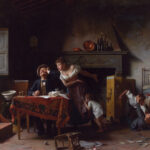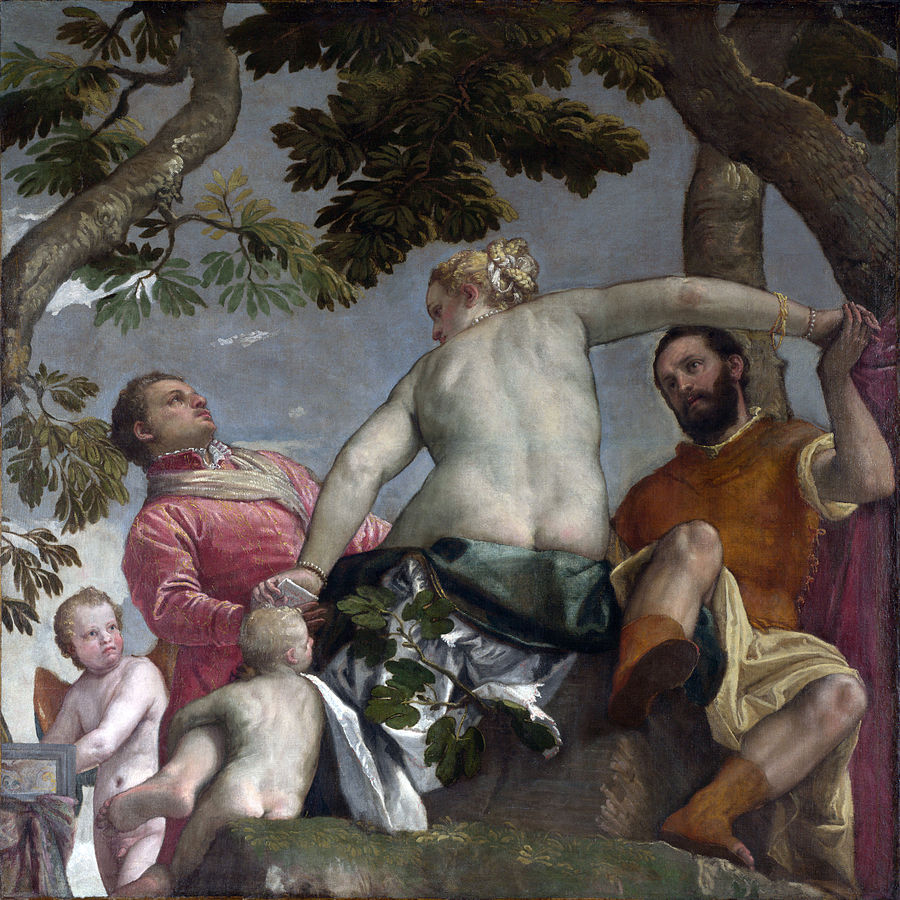
Paolo Veronese’s name echoes through the centuries, a pillar of the Italian Renaissance whose masterful painting still enchants today. In his vast body of works, the Nuptial Allegories stand out, a series of paintings that seem to weave together the fabric of love and marriage, proposing a symbolic journey from the dark labyrinth of vices to the bright abode of virtues.
Veronese, skilled in manipulating light and color, appears to use his palette not just to bring figures and shapes to life, but also to explore the facets of the human soul. The first of the four paintings, which immediately brings us to the heart of the tension between pleasure and duty, shows us an intense scene: a naked woman, portrayed from the back, symbolizing love in all its fragility and power, is at the center of a tug of war between two men, figures of the eternal contrast between ephemeral eros and lasting affection. Music-making cherubs, with their celestial melody, seem to lighten the scene, adding a touch of innocence and playfulness to the picture of seduction.
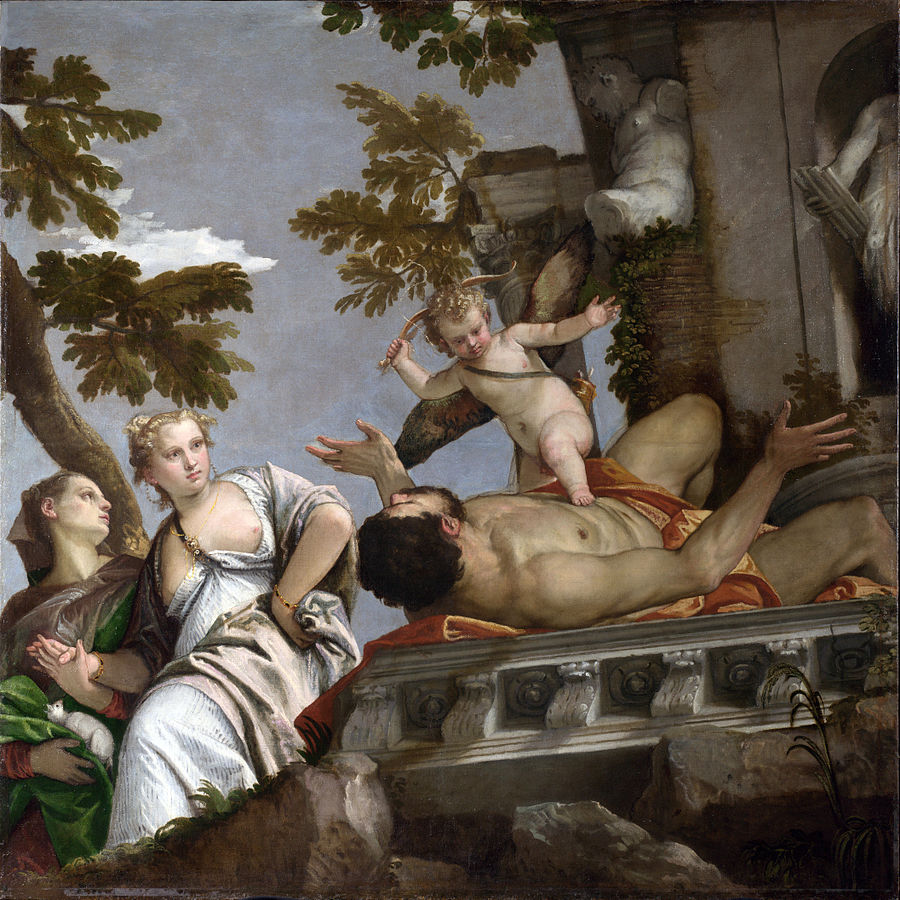
In the second fresco, Veronese transforms into a silent narrator of human emotions, weaving a visual canvas that tells a story of love and inner struggle. In the scene, a man lies on the ground, almost crushed under the weight of his passions, as if Cupid’s arrow was too heavy for the human heart to bear. His body, in a pose that evokes both abandonment and defeat, seems to yield under the turmoil of earthly love that intoxicates the senses.
Beside him, emerges the figure of a woman, draped with the elegance of someone who knows her dignity. The ermine she carries is more than a mere marital symbol; it is a sign of purity and status, of a love that aspires to a higher and nobler form. This woman is not merely a spectator of the man’s fall, but rather a living representation of chaste and unblemished love, the kind that marriage aims to jealously guard.
The contrast between the two is an invitation to reflection: Veronese prompts us to consider how love can be at once a source of great joy and deep suffering, how it can elevate the soul to the stars or throw it into the darkest chaos. The calm and composed presence of the woman, with the ermine whispering promises of eternal fidelity, is a beacon of hope in the tumult of human passions.
The artist, with a mastery that speaks through the centuries, thus captures a moment of intimate surrender and elevation, inviting us to reflect on the tortuous paths of love and the salvific strength that can emerge from the sacred bond of marriage.
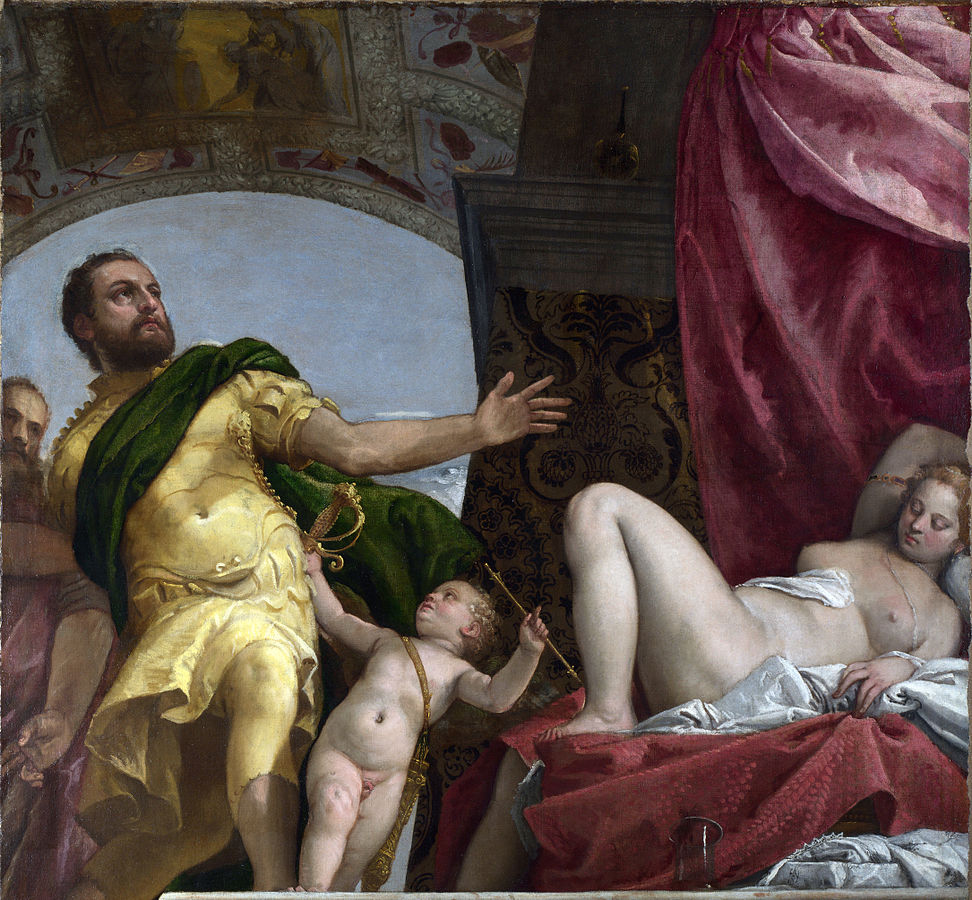
In the third fresco, Veronese seems to want to capture the eternal battle between desire and wisdom. The armored man, proud in his battle attire, stands as a symbol of resistance against ephemeral seductions. His posture is tense, charged with a dynamism that seems to arise directly from his internal conflict. The muscles are tense, the veins throb under the skin, as if every fiber of his being fought against the temptation embodied by Cupid, who with a mischievous smile and roguish gaze, invites him to indulge in earthly joys.
The warrior, however, is not just an icon of physical strength but a metaphor for the arduous struggle between mind and body, between intellect seeking to rise and instinct trying to drag it down. The armor he wears is the bulwark not only against tangible enemies but also against internal ones, symbols of the defense of virtue against the pitfalls of pleasure. His hands, ready to wield the sword, instead seek an invisible support, almost seeking a balance between the need to defend and the desire to understand.
With a background that fades from the tumult of battle towards a more serene horizon, the painting speaks of the possibility of human will triumphing. The warrior, caught in the act of listening to that deeper voice echoing within him, represents the man who, though immersed in the storm of passions, remains steadfast and strives to follow the path of reason.
Veronese, with this painting, invites the viewer to consider the value of temperance and self-control. It is a celebration of humanity in its struggle for moral and spiritual elevation, a reminder not to forget that, even in the depths of temptation, there is always the possibility of choosing the path of intellect and honor.
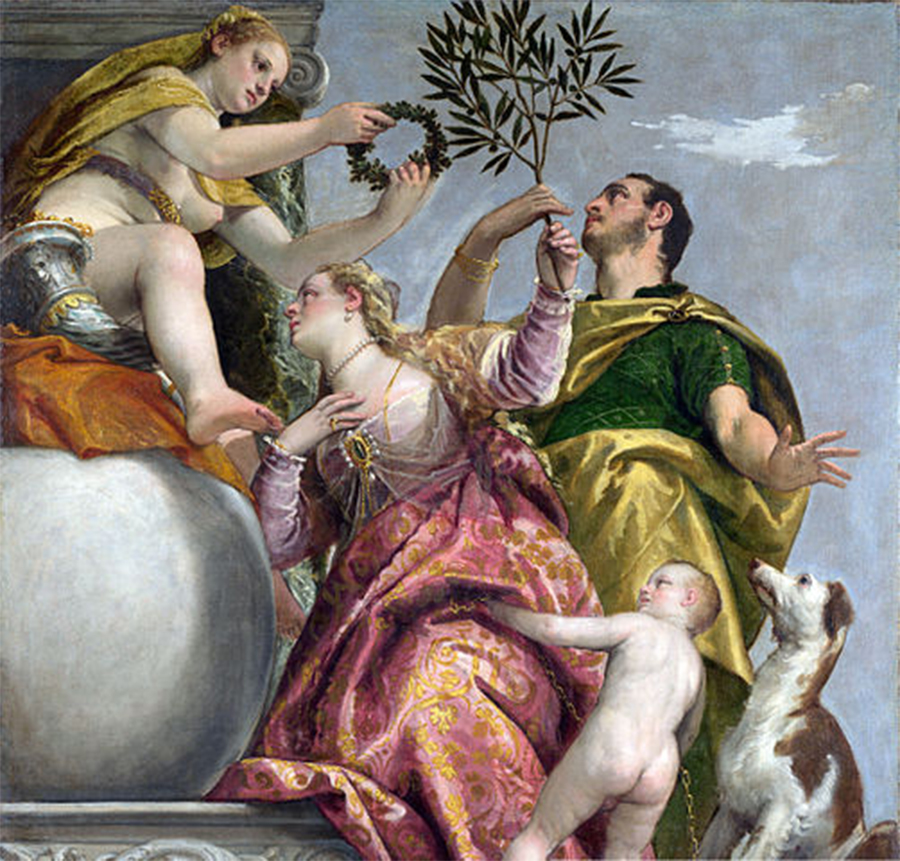
Finally, the apotheosis of this cycle is represented in the fourth painting, where the goddess of Fortune, easily recognizable by her cornucopia, crowns the couple with laurel. They themselves hold an olive branch, an emblem of peace and prosperity, in an atmosphere pervaded by triumphant serenity. Completing the work, the presence of a cherub gently binding the couple with a golden chain, and the dog, a traditional symbol of fidelity, here particularly evocative of the marital bond.
These masterpieces, although silent about their precise origins and the faces for which they were created, speak a universal language, that of love renewed generation after generation, of alliances forged and promises kept. They not only showcase Veronese’s technical mastery but also illuminate his deep psychological insight and his ability to tell stories that, while rooted in his time, resonate powerfully in every era.




